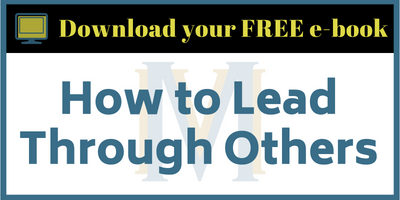Trust is the magic pixie dust of leadership.
If you’ve got it, you can fly. But if you don’t have trust, even simple things become hard.
That’s why one of the must-have traits of a good leader is the ability to generate and build trust.
There are two paths to building trust
There are many ways to build trust, but there are only two main paths: building trust fast, and building trust slow.
In the next few posts, I’m going to share the difference between these two paths and then the specific behaviors that will help you build trust on each path.
The Foundation of Trust
Deep down, there is one common foundation for trust between people. That foundation is the belief that I know your character, and that I judge it to be both stable and well-intentioned towards me.
If the foundation of trust is knowing someone’s character, then the fast and slow paths to building trust are just different approaches to making yourself knowable.
Think about it, the people we don’t trust are the people we believe are putting on a mask or otherwise hiding something about themselves. We don’t trust them, because we can’t know them (or we know them to be false).
Both paths to trust are built on honesty (speaking the truth) and integrity (acting and speaking the same way in public and private). But the two speeds to get to trust differ in how they reveal your character.
What you get with the fast track is lowered defenses.
The fast track to building trust is based on demonstrating vulnerability quickly.
In other words, I know that you are trust-worthy because you did not hide the weak parts of yourself or pretend to be better than you are when we first met. Because you revealed something less than ideal about yourself, I believe that I can know the real you as our relationship develops.
On the fast track, I do not have a history with you or a track record I can use to evaluate whether I should trust you or not. However, your vulnerability lowers my defenses and invites me to begin a trusting relationship with you.
What you get with the slow road is a solid bridge.
The slow road to building trust is based on demonstrating consistency over time.
In other words, I know that you are trust-worthy, because I see you act and speak the same way over and over. You prove your honesty and integrity by consistent behavior.
On the slow road, I become convinced that I do, in fact, know the real you and that you have good intentions toward me. I am not put off by your occasional mistakes in our relationship, because I have a long history of evidence about who you really are.
Two ways to be known and trusted
Both paths to trust, fast and slow, are based on letting people know you. The fast path starts with showing a weakness to demonstrate that you can be known. The slow path builds more trust by proving over time that you really are the person everyone thought you were.
In the next few articles, I’ll share specific behaviors and strategies to building trust fast and slow, and I’ll help you know when you should use each approach.
Like us on Twitter, LinkedIn, or Facebook to get thoughtful articles on the bridges leaders must build and cross to inspire greater performance.



